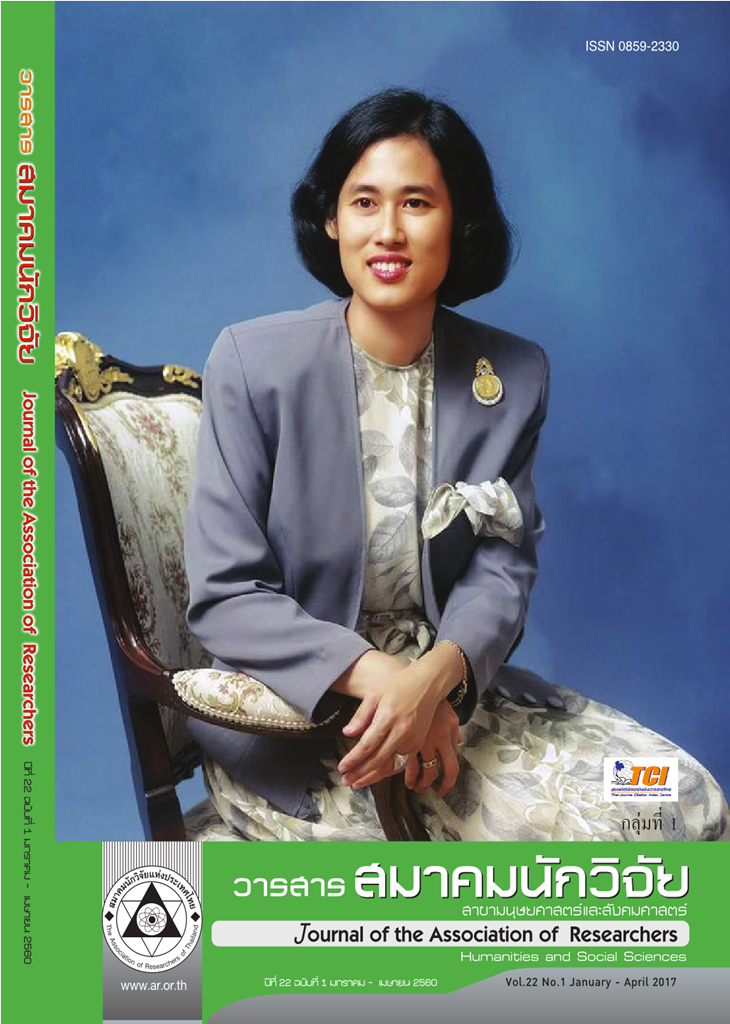Structural Equation Modeling of Self-image Congruence, Consumer Centric Content Marketing Strategies, and Brand Loyalty of Leading Thai Banks’ Facebook Followers
Main Article Content
Abstract
This research aims to conduct the structural equation model of Self-image Congruence as independent variable, Consumer Centric Content Marketing Strategies as mediating variables, and Brand Loyalty among Facebook Followers of Leading Thai Banks as dependent variable. During the data collection period, 276 individuals completed the Online Surveys. The results show that most fit indices in the proposed structural equation model are in acceptable levels (Chi-square = 276.074, Probability level = 0.00, CMIN/DF = 2.655, RMSEA = 0.078, GFI = 0.901, CFI = 0.922). Self-image congruence between Banks’ Facebook and their followers significantly determines the effective levels of content marketing strategies in the aspects of products/services, brands, banks, and other FB followers (β = 0.76, 0.74, 0.73, and 0.67, respectively, with p < 0.05). Additionally, the content marketing strategies particularly in the aspects of banks, and other followers significantly influence brand loyalty of the FB followers (β = 0.46 and 0.59, respectively with p < 0.05). At the ending session, the author discusses the results with implications for relevant firms to develop social media activities to build up their brand loyalty.
Article Details
บทความที่ปรากฏในวารสารนี้ เป็นความรับผิดชอบของผู้เขียน ซึ่งสมาคมนักวิจัยไม่จำเป็นต้องเห็นด้วยเสมอไป การนำเสนอผลงานวิจัยและบทความในวารสารนี้ไปเผยแพร่สามารถกระทำได้ โดยระบุแหล่งอ้างอิงจาก "วารสารสมาคมนักวิจัย"
References
Ashforth., B.E. & Mael, F. (1989). “Social identity theory and the organization”, Academy of Management Review, Vol. 14 No. 1, 97-103.
Bagozzi, R. & Dholakia, U. (2006). Open source software communities: A study of participation in Linux user groups. Management Science, 52(7), 1099-1115.
Bagozzi, R. P., & Yi, Y. (1988). On the evaluation of structural equation models. Journal of the academy of marketing science, 16(1), 74-94.
Cronbach, L. J. (1970). Essentials of psychological testing. New York: Harper and Row. Delgado-Ballester, E., Munuera-Aleman, J. L., & Yague-Guillen, M. J. (2003). Development and validation of a brand trust scale. International Journal of Market Research, 45(1), 35-54.
Dillman, D. A. (2007). Mail and internet surveys - the tailored design method, 2nd ed. New York. Wiley. Fornell, C. & Larcker, D. F. (1981). “Evaluating structural equation models with unobservable variables and measurement error”, Journal of Marketing Research, Vol.18 (1): 39-50.
Kang, J.H. (2002), “A structural model of image-based and utilitarian decision-making processes for participant sport consumption”, Journal of Sport Management, Vol. 16, 173-89.
Koiso-Kanttila, N. (2004), “Digital content marketing”, Journal of Marketing Management, Vol. 20, No.1-2, 45-65.
Lang, B. (2010). Ipsos OTX study: People spend more than half their day consuming media. The Wrap.
Laroche, M., Habibi, M.R., & Richard, M. (2013), “To be or not to be in social media: How brand loyalty is affected by social media?”, International Journal of Information Management, Vol 33, 76-82.
Lee, D., Moon, J., Kim, Y. J., & Yi, M. Y. (2015), “Antecedents and consequences of mobile phone usability: Linking simplicity and interactivity to satisfaction, trust, and brand loyalty”, Information & Management, Vol. 52, 295–304.
McAlexander, H., Schouten, J., & Koening, H. (2002), “Building brand community”, Journal of Marketing, Vol 66(1), 38-54.
Pulizzi, J. (2012), “The rise of storytelling as the new marketing”, Pub Res Q, Vol. 28, 116-123.
Rowley, J. (2008). Understanding digital content marketing. Journal of Marketing Management, Vol. 24 Issue 5- 6, 517-540.


